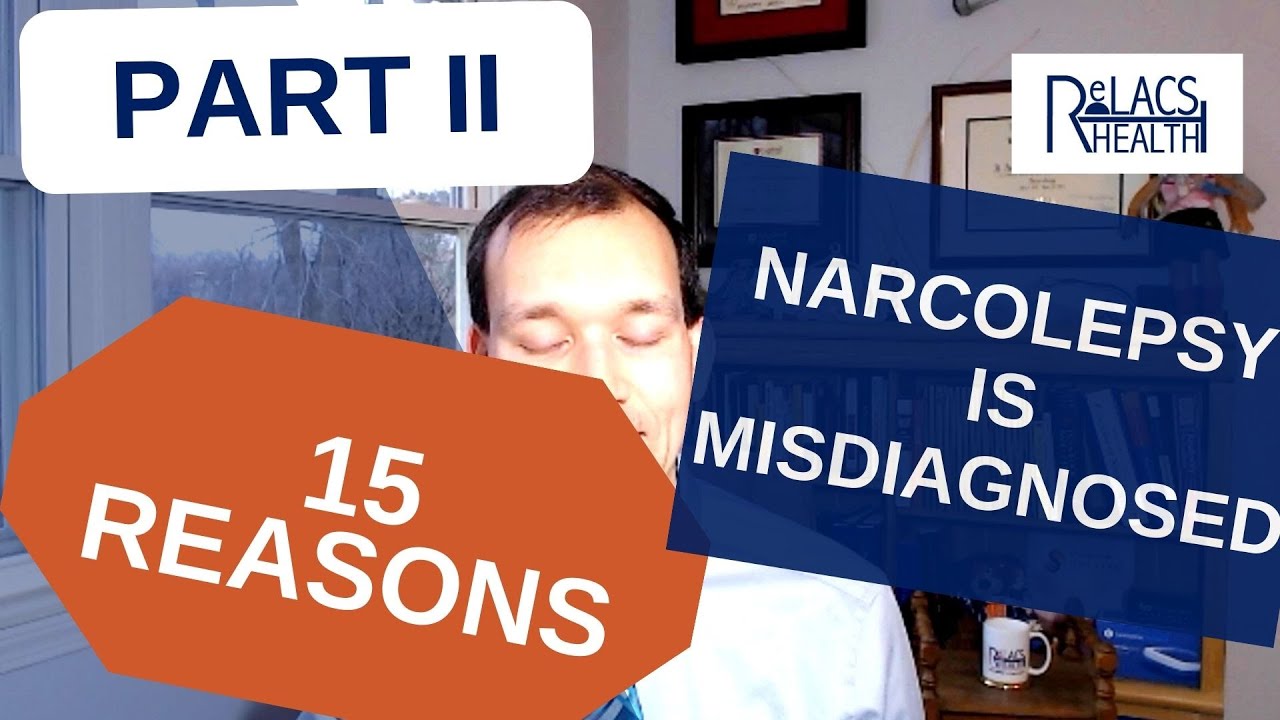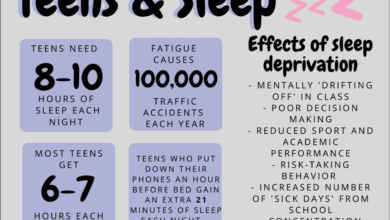
Faqs what is narcolepsy with cataplexy – FAQs: What is narcolepsy with cataplexy? This condition, often misunderstood, involves a complex interplay of sleep disturbances and physical manifestations. It’s characterized by an unusual and unpredictable relationship with sleep, impacting daily life in significant ways. Understanding the intricacies of narcolepsy with cataplexy, from its defining symptoms to potential causes and treatment options, is crucial for those affected and those seeking to support them.
This comprehensive guide delves into the world of narcolepsy with cataplexy, exploring its various facets. We’ll examine its defining features, explore the range of symptoms, delve into potential causes, discuss diagnostic methods, and analyze its impact on daily life. The information presented aims to be accessible and informative, providing a clear and concise overview of this complex sleep disorder.
Defining Narcolepsy with Cataplexy

Narcolepsy with cataplexy is a chronic neurological disorder characterized by excessive daytime sleepiness and a sudden loss of muscle tone triggered by strong emotions. Understanding this condition requires a deep dive into the complexities of sleep stages and the unique ways it disrupts normal sleep patterns. It’s a condition that significantly impacts daily life, affecting everything from work and social interactions to personal relationships.This condition isn’t simply about feeling tired; it’s about the body’s involuntary response to emotions, leading to unpredictable episodes of weakness.
A key aspect to grasp is how it differs from other sleep disorders, particularly those without cataplexy. This distinction is crucial for accurate diagnosis and effective treatment.
Key Characteristics of Narcolepsy with Cataplexy
Narcolepsy with cataplexy is defined by the combination of excessive daytime sleepiness (EDS) and sudden muscle weakness (cataplexy) triggered by strong emotions. These two primary symptoms are interwoven, creating a unique sleep-wake cycle disruption. Other symptoms may include sleep paralysis, hypnagogic hallucinations, and sleep-onset REM periods.
Distinguishing Narcolepsy with and without Cataplexy
Narcolepsy without cataplexy primarily presents with excessive daytime sleepiness, but lacks the dramatic muscle weakness characteristic of cataplexy. While both types share the core symptom of EDS, the presence or absence of cataplexy is a crucial differentiator in diagnosis and management. The underlying neurological mechanisms differ, leading to different treatment approaches.
Stages of Sleep and Narcolepsy with Cataplexy
Understanding the stages of sleep is fundamental to comprehending narcolepsy with cataplexy. Normal sleep progresses through distinct stages, each characterized by specific brainwave patterns and physiological changes. Narcolepsy with cataplexy often disrupts this natural cycle, leading to frequent shifts between wakefulness and REM sleep.The typical stages of sleep include non-rapid eye movement (NREM) stages 1-3, followed by rapid eye movement (REM) sleep.
Narcolepsy often features intrusions of REM sleep into wakefulness, resulting in cataplexy or other symptoms like hallucinations. The disruption of these sleep stages leads to the excessive daytime sleepiness and other symptoms characteristic of narcolepsy.
Comparison of Narcolepsy with Cataplexy to Other Sleep Disorders
| Characteristic | Narcolepsy with Cataplexy | Other Sleep Disorders (e.g., Insomnia, Sleep Apnea) |
|---|---|---|
| Excessive Daytime Sleepiness (EDS) | Present, often severe and disrupting daily activities. | May be present, but often not as prominent or as disruptive. |
| Cataplexy | Present; sudden loss of muscle tone triggered by strong emotions. | Absent. |
| Sleep Paralysis | Frequently reported. | Less common. |
| Hypnagogic/Hypnopompic Hallucinations | Frequently reported. | Less common. |
| Sleep Onset REM Periods | Characteristic feature. | Absent. |
| Underlying Neurobiological Mechanism | Deficiency in hypocretin (orexin) neurons. | Various, depending on the specific disorder. |
This table highlights the key distinctions between narcolepsy with cataplexy and other common sleep disorders. These distinctions are critical for accurate diagnosis and treatment planning.
Symptoms and Manifestations: Faqs What Is Narcolepsy With Cataplexy
Narcolepsy with cataplexy is a complex neurological disorder characterized by a range of unusual symptoms that significantly impact daily life. Understanding these symptoms is crucial for accurate diagnosis and effective management. This section delves into the primary manifestations, exploring the connections between cataplexy and emotional triggers, the role of sleep paralysis and hypnagogic hallucinations, and the physical expressions of cataplexy.The symptoms of narcolepsy with cataplexy are diverse and can vary in severity and frequency from person to person.
Recognizing these patterns is vital for both self-awareness and seeking appropriate medical support. This comprehensive overview aims to illuminate the intricacies of this condition.
Primary Symptoms of Narcolepsy with Cataplexy
The hallmark symptoms of narcolepsy with cataplexy often include excessive daytime sleepiness, along with sudden and temporary muscle weakness. These symptoms are interwoven and frequently impact an individual’s quality of life, impacting social interactions and professional activities. Understanding the triggers and mechanisms behind these symptoms is essential for effective management.
So, you’re looking for FAQs on narcolepsy with cataplexy? It’s a fascinating but sometimes tricky condition. Understanding the various symptoms and how they impact daily life is key. While we’re on the topic of unusual neurological conditions, did you know about body-focused repetitive behaviors (BFRBs)? Learning more about them can be helpful, and you can explore that further here.
Ultimately, understanding the complexities of narcolepsy with cataplexy involves delving into the specifics of the condition. Getting accurate information is essential for navigating this.
Connection Between Cataplexy and Emotional Triggers
Cataplexy episodes are frequently precipitated by strong emotions, such as laughter, anger, or surprise. The intensity of the emotional response correlates with the severity of the cataplectic episode. For instance, a sudden burst of laughter might cause a person to momentarily lose muscle tone, leading to a temporary collapse or a feeling of weakness. This link underscores the intricate relationship between the emotional and physical aspects of the condition.
Sleep Paralysis and Hypnagogic Hallucinations
Sleep paralysis and hypnagogic hallucinations are common experiences for individuals with narcolepsy. Sleep paralysis occurs when a person is transitioning between sleep and wakefulness, often involving a temporary inability to move or speak. Hypnagogic hallucinations are vivid sensory experiences that occur just before falling asleep or right after waking up. These experiences can be frightening, but they are a recognized symptom of the disorder.
Physical Manifestations of Cataplexy
The physical manifestations of cataplexy can range from subtle to severe. They encompass a spectrum of muscle weakness, including a sudden drooping of the eyelids, a slumping posture, or a complete collapse. The duration of these episodes varies, but they typically last only a few seconds to a few minutes. Examples include a sudden inability to lift one’s arms or a temporary loss of balance.
Symptom Frequency Table
| Symptom Type | Description | Frequency |
|---|---|---|
| Excessive Daytime Sleepiness (EDS) | Persistent feeling of tiredness and difficulty staying awake during the day | Almost always present |
| Cataplexy | Sudden loss of muscle tone triggered by strong emotions | Variable, can range from several times a day to less frequently |
| Sleep Paralysis | Temporary inability to move or speak when falling asleep or waking up | Variable, can range from rarely to several times a week |
| Hypnagogic Hallucinations | Vivid sensory experiences, such as seeing or hearing things, just before falling asleep | Variable, can range from rarely to several times a week |
Causes and Risk Factors

Understanding the causes of narcolepsy with cataplexy is crucial for effective management and support. While the exact mechanisms remain somewhat elusive, research suggests a complex interplay of genetic predisposition and environmental factors. This intricate relationship between nature and nurture contributes to the development of this neurological disorder.The precise causes of narcolepsy with cataplexy remain a mystery, but scientists have identified key factors that increase the risk of developing the condition.
This includes an intricate interaction of genetic predispositions and environmental triggers.
Potential Underlying Causes
Narcolepsy with cataplexy is thought to arise from a combination of genetic susceptibility and environmental triggers. A malfunction in the brain’s neurochemical systems, specifically those regulating sleep-wake cycles and the release of neurotransmitters like hypocretin/orexin, plays a pivotal role. This disruption can lead to the unpredictable and often debilitating symptoms associated with the condition.
Role of Genetics
A significant role in the development of narcolepsy with cataplexy is played by genetic factors. Studies have identified specific genes that appear to increase susceptibility to the disorder. Inheritance patterns suggest a complex genetic architecture, implying that multiple genes likely contribute to the condition. Family history of narcolepsy is a strong indicator of genetic predisposition.
Environmental Factors
While genetics plays a substantial role, environmental factors also appear to contribute to the development of narcolepsy with cataplexy. Certain infections, though not definitively linked, have been noted in some cases, suggesting a potential role of immune system dysfunction in triggering the disorder. Exposure to specific chemicals or toxins has also been considered, although conclusive evidence remains limited.
Immune System’s Role
The immune system’s involvement in narcolepsy with cataplexy is an area of active research. An autoimmune response, where the immune system mistakenly attacks healthy brain cells, might contribute to the disorder’s development. This autoimmune component is further evidenced by the presence of specific antibodies in some patients.
Comparison with Other Neurological Disorders
While narcolepsy with cataplexy shares some overlapping symptoms with other neurological disorders, such as sleep disorders or movement disorders, the specific mechanisms and underlying causes differ significantly. For example, while both conditions can affect sleep patterns, the exact neurochemical imbalances and genetic predispositions are unique to narcolepsy.
Risk Factors Categorization
| Category | Risk Factor | Explanation |
|---|---|---|
| Genetics | Family history of narcolepsy | Having a family member with narcolepsy significantly increases the risk of developing the condition. |
| Genetics | Specific genes | Certain genes have been linked to an increased likelihood of developing narcolepsy. |
| Environmental | Infections | Certain infections, though not definitively proven, might trigger or exacerbate the condition. |
| Environmental | Exposure to toxins | Exposure to certain chemicals or toxins might increase the risk, but this needs further investigation. |
| Immune System | Autoimmune responses | An autoimmune reaction might contribute to the development or worsening of narcolepsy symptoms. |
Diagnosis and Treatment
Navigating the complexities of narcolepsy with cataplexy often requires a multifaceted approach. Accurate diagnosis is the cornerstone of effective treatment, leading to improved quality of life for those affected. Understanding the diagnostic process and the diverse treatment options available empowers individuals and their healthcare providers to develop a personalized management strategy.
The Diagnostic Process
The diagnosis of narcolepsy with cataplexy is a multi-step process, often involving a comprehensive evaluation of symptoms, medical history, and sleep patterns. Crucial to this process are sleep studies, which provide objective data on sleep stages and characteristics. This information helps distinguish narcolepsy from other sleep disorders or medical conditions that may present with similar symptoms. Physicians meticulously review patient reports of sleep difficulties and cataplexy episodes.
This careful consideration of personal experiences, combined with objective testing, allows for an accurate and thorough assessment.
The Importance of Sleep Studies
Sleep studies, also known as polysomnography (PSG), are essential for confirming a diagnosis of narcolepsy with cataplexy. These studies monitor various physiological parameters during sleep, including brain waves, eye movements, muscle activity, heart rate, and breathing patterns. This detailed record provides valuable insights into sleep architecture and identifies potential disruptions characteristic of narcolepsy. For example, a sleep study might reveal the presence of rapid eye movement (REM) sleep intrusions into wakefulness, a hallmark feature of narcolepsy.
This objective data, alongside the patient’s reported symptoms, helps solidify the diagnosis.
Treatment Options for Narcolepsy with Cataplexy
Managing narcolepsy with cataplexy involves a combination of lifestyle adjustments and pharmacological interventions. These treatments aim to alleviate symptoms, improve daytime alertness, and enhance overall well-being.
So, you’re curious about narcolepsy with cataplexy? It’s a fascinating neurological disorder, but sometimes the complexities of medical conditions can be overwhelming. Knowing the potential causes of recurring miscarriages can also be a crucial step in the journey to understanding overall health, and there are diagnostic tests available to explore these factors. For instance, test the cause of many miscarriages can help uncover underlying issues that might be impacting fertility.
Ultimately, understanding the factors contributing to conditions like narcolepsy with cataplexy is key to finding appropriate treatments and support. More information on narcolepsy with cataplexy is always available.
The Role of Medication in Symptom Management
Medication plays a critical role in managing the symptoms of narcolepsy with cataplexy. Stimulants, such as methylphenidate and modafinil, are commonly prescribed to combat excessive daytime sleepiness. These medications help regulate brain activity and improve wakefulness. Antidepressants, often tricyclic antidepressants, can also be effective in reducing cataplexy episodes. The choice of medication, dosage, and potential side effects should be carefully considered and discussed with a healthcare professional.
A thorough discussion regarding potential side effects is crucial to ensure the chosen medication aligns with the patient’s needs and overall health.
Comparison of Treatment Approaches
The efficacy of different treatment approaches can vary depending on individual responses and the specific symptoms experienced. A comparative analysis of various treatment options is presented below.
| Treatment | Mechanism | Efficacy |
|---|---|---|
| Stimulants (e.g., methylphenidate) | Increase brain activity, improve alertness | Generally effective in reducing daytime sleepiness; potential side effects like anxiety and insomnia |
| Antidepressants (e.g., venlafaxine) | Modify neurotransmitter levels, reduce cataplexy | Often effective in controlling cataplexy; potential side effects like nausea and sexual dysfunction |
| Sodium Oxybate (Xyrem) | Increases levels of GABA, a neurotransmitter; affects sleep/wake cycles | Proven effective in reducing cataplexy and improving sleep; potential side effects include headaches and sleepiness |
Impact on Daily Life
Living with narcolepsy with cataplexy significantly impacts daily life, creating challenges in various aspects of routine. The unpredictable nature of the condition, including sudden sleep attacks and the debilitating muscle weakness of cataplexy, can disrupt work, school, social interactions, and overall well-being. Understanding these challenges and developing coping strategies are crucial for managing the disorder effectively.
Challenges in Daily Activities
The unpredictable nature of narcolepsy with cataplexy makes performing everyday tasks difficult. Sleep attacks can occur at any time, leading to lapses in concentration and potential accidents. Cataplexy, triggered by strong emotions or physical exertion, can result in sudden, temporary muscle weakness, impacting activities like walking, talking, or even maintaining posture. This unpredictability can make it challenging to maintain a consistent schedule and perform tasks requiring sustained attention.
So, you’re digging into FAQs about narcolepsy with cataplexy? It’s a tough one, and sometimes all you need is a quick, easy meal to get through the day. Luckily, there are plenty of delicious, nutritious options out there, like the ones in this helpful list of recipes for when you’re exhausted. Understanding narcolepsy with cataplexy takes time and energy, but hopefully, these recipes can help with the day-to-day challenges.
Impact on Social Interactions and Relationships
Social interactions can be significantly affected by narcolepsy with cataplexy. Sudden sleep attacks in public, or episodes of cataplexy, can be embarrassing and isolating. Individuals may avoid social situations, fearing judgment or difficulty performing social tasks. The unpredictable nature of the condition can strain relationships with friends and family, as they may struggle to understand the condition and its impact.
Open communication and understanding are vital to maintaining strong relationships.
Importance of Support Networks and Coping Mechanisms
Strong support networks are essential for managing narcolepsy with cataplexy. Family, friends, and support groups provide understanding, encouragement, and practical advice. Coping mechanisms, such as time management strategies, regular exercise, and stress reduction techniques, can help manage symptoms and improve overall well-being.
Common Challenges and Possible Solutions, Faqs what is narcolepsy with cataplexy
- Sleep Attacks: Frequent sleep attacks during work or school can significantly impair performance. Strategies include scheduling naps, creating a sleep schedule, and taking short breaks throughout the day. Avoiding overstimulation before activities can also help.
- Cataplexy: The sudden muscle weakness of cataplexy can be embarrassing and potentially dangerous. Managing stress, avoiding triggers, and practicing relaxation techniques can reduce the likelihood of episodes. Also, having a plan to mitigate the impact of cataplexy, such as carrying a supportive device or having someone nearby in case of an episode, can be helpful.
- Fatigue: Persistent fatigue can affect daily functioning. Regular sleep, healthy diet, and exercise can help manage fatigue. Also, getting sufficient rest, taking breaks, and avoiding caffeine or alcohol before bed are essential.
- Social Isolation: Fear of embarrassment or difficulty participating in social situations can lead to social isolation. Joining support groups, engaging in activities with understanding friends, and open communication about the condition with social circles can be beneficial.
Impact on Work and School Performance
Narcolepsy with cataplexy can significantly affect work and school performance. Missed deadlines, decreased productivity, and difficulty concentrating can impact grades and job performance. Individuals with this condition may experience difficulties with tasks that require sustained attention or physical exertion. Strategies like using breaks, employing time management techniques, and discussing accommodations with employers or teachers can help manage the impact on work and school.
Open communication and understanding from supervisors and teachers are crucial. Furthermore, employers and schools may offer adjustments, like flexible work schedules, to accommodate the condition. Examples include taking short naps during the day or taking frequent breaks to avoid sleep attacks.
Living with Narcolepsy with Cataplexy
Living with narcolepsy with cataplexy can be challenging, but with the right strategies and support, it’s possible to manage the condition effectively and maintain a fulfilling life. This involves understanding the multifaceted nature of the disorder and implementing practical approaches to daily routines and interactions.Effective management requires a holistic approach that goes beyond just medication. It’s about adapting to the unique challenges posed by narcolepsy and cataplexy, and building a strong support system.
This includes learning to anticipate and mitigate potential triggers, optimizing sleep patterns, and fostering strong social connections.
Strategies for Managing the Condition Effectively
Effective management of narcolepsy with cataplexy necessitates a multifaceted approach. This includes medication adherence, lifestyle adjustments, and a robust support system. Understanding the triggers that lead to cataplectic episodes and developing strategies to minimize their occurrence is crucial.
Importance of Lifestyle Adjustments
Lifestyle adjustments are critical for managing narcolepsy with cataplexy. Regular sleep schedules, consistent mealtimes, and mindful stress management are vital components of a healthy lifestyle. These adjustments can significantly improve the overall quality of life and help manage symptoms.
- Regular Sleep Schedule: Maintaining a consistent sleep schedule, even on weekends, helps regulate the body’s natural sleep-wake cycle. This can improve sleep quality and reduce daytime sleepiness. Consistency is key; aiming for 7-9 hours of sleep per night is recommended, but individual needs may vary.
- Balanced Diet: A balanced diet rich in fruits, vegetables, and whole grains provides essential nutrients to support overall health and energy levels. Avoiding excessive caffeine and alcohol can also be beneficial.
- Stress Management: Chronic stress can exacerbate narcolepsy symptoms. Practicing stress-reducing techniques such as meditation, yoga, or deep breathing exercises can be very helpful in managing stress and improving overall well-being.
Role of Support Groups and Resources
Connecting with support groups and utilizing available resources can significantly impact the management of narcolepsy with cataplexy. These resources offer a platform for sharing experiences, gaining support, and learning coping strategies from others who understand the challenges.
- Support Groups: Support groups provide a safe and supportive environment for individuals with narcolepsy and cataplexy to connect with others facing similar challenges. Sharing experiences and coping strategies can offer valuable insights and reduce feelings of isolation.
- Online Communities: Online forums and communities offer a platform for individuals to connect, ask questions, and share experiences. These virtual support networks can provide immediate access to information and support, especially when face-to-face meetings aren’t feasible.
- Healthcare Professionals: Consultations with neurologists, sleep specialists, and other healthcare professionals are essential for developing a personalized management plan. Regular check-ups and communication are crucial for monitoring symptoms and adjusting treatment as needed.
Optimizing Sleep Quality and Duration
Optimizing sleep quality and duration is paramount in managing narcolepsy with cataplexy. Implementing strategies to promote restful sleep can significantly improve daytime alertness and reduce the impact of the condition on daily life.
- Creating a Conducive Sleep Environment: A dark, quiet, and cool bedroom environment promotes better sleep quality. Comfortable bedding, appropriate room temperature, and minimal noise or light can all contribute to a more restful sleep experience.
- Establishing a Pre-Sleep Routine: A calming pre-sleep routine can signal to the body that it’s time to wind down. Activities like reading, taking a warm bath, or listening to calming music can promote relaxation and improve sleep onset.
- Napping Strategically: Short, planned naps can be beneficial for combating daytime sleepiness, but long or irregular naps can disrupt the sleep-wake cycle. Scheduling naps strategically and limiting their duration can help optimize their effectiveness.
Maintaining Social Interactions and Relationships
Maintaining social interactions and relationships is possible despite narcolepsy with cataplexy. Open communication, understanding, and proactive strategies can help navigate social situations and foster strong connections.
- Open Communication: Open and honest communication with loved ones about the condition and its potential impact on social interactions can foster understanding and support. Educating others about the condition can also help reduce misconceptions.
- Planning Ahead: Planning social events in advance can help anticipate potential challenges and develop strategies to mitigate the impact of narcolepsy with cataplexy. Adjusting plans or seeking accommodations when necessary is also important.
- Seeking Support: Enlisting the support of friends, family, or support groups can be valuable when navigating social situations. These individuals can offer encouragement and understanding when dealing with potential challenges.
Illustrative Examples
Understanding narcolepsy with cataplexy requires more than just definitions and diagnoses. Real-life stories highlight the spectrum of experiences and the ways individuals navigate this complex condition. These examples demonstrate the impact on daily life, the importance of support, and strategies for managing symptoms.
A Fictional Case Study
Amelia, a 28-year-old graphic designer, experienced sudden, unpredictable episodes of muscle weakness, often triggered by strong emotions like laughter or anger. These cataplectic attacks made it difficult to concentrate at work, leading to missed deadlines and anxiety. Simultaneously, she struggled with excessive daytime sleepiness, impacting her ability to maintain focus during meetings and complete tasks. This combination of symptoms significantly hampered her career progression and social life.
Amelia’s experience underscores the challenges faced by individuals with narcolepsy with cataplexy in balancing their personal and professional lives.
Successful Management
A successful approach for managing narcolepsy with cataplexy is evident in the case of David, a 35-year-old teacher. He implemented a structured sleep schedule, incorporating regular naps throughout the day, to combat the excessive daytime sleepiness. He also used cognitive behavioral therapy (CBT) to manage his anxiety and develop coping mechanisms for cataplexy triggers. By actively managing his sleep hygiene and mental well-being, David found a way to maintain a fulfilling career and a vibrant social life.
This illustrates that a proactive approach can significantly improve the quality of life for someone with this condition.
Support Group Impact
A supportive environment can profoundly impact the lives of those with narcolepsy with cataplexy. Sarah, a 22-year-old college student, found invaluable support in a local narcolepsy support group. The shared experiences and encouragement from others facing similar challenges helped her develop coping mechanisms and strategies for managing her symptoms. The group provided a safe space to discuss her concerns, share tips, and connect with people who understood her unique struggles.
This fostered a sense of community and resilience.
Modifying Daily Schedules
Adjusting daily schedules is essential for managing narcolepsy with cataplexy. A tailored schedule that incorporates regular short naps throughout the day can help combat the excessive daytime sleepiness. For instance, a 20-minute nap in the mid-afternoon can provide a significant boost in energy levels, allowing for improved focus and productivity. This example highlights the importance of experimenting with different schedules to determine the most effective approach for individual needs.
Job Accommodation
Adapting a job to accommodate a person’s needs is vital. Consider the case of Mark, a 45-year-old accountant. His employer implemented flexible working hours, allowing him to take short breaks throughout the day to address sleepiness and cataplexy episodes. This flexibility enabled Mark to maintain his job responsibilities while effectively managing his condition. This demonstrates that supportive employers can create an environment where individuals with narcolepsy with cataplexy can thrive.
Final Wrap-Up
In conclusion, narcolepsy with cataplexy is a multifaceted condition requiring a nuanced understanding. While challenging, it’s crucial to remember that effective management and support are key. This discussion has highlighted the significant impact of this disorder on daily life, emphasizing the importance of accurate diagnosis, appropriate treatment, and strong support systems. With knowledge and understanding, individuals affected by narcolepsy with cataplexy can lead fulfilling lives.





